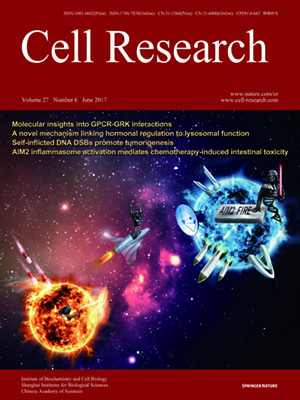
Volume 27, No 6, Jun 2017
ISSN: 1001-0602
EISSN: 1748-7838 2018
impact factor 17.848*
(Clarivate Analytics, 2019)
Volume 27 Issue 6, June 2017: 838-841
LETTERS TO THE EDITOR
ShHTL7 is a non-canonical receptor for strigolactones in root parasitic weeds
Ruifeng Yao1,*, Fei Wang2,*, Zhenhua Ming3, Xiaoxi Du1, Li Chen1, Yupei Wang1, Wenhao Zhang1, Haiteng Deng1 and Daoxin Xie1
1Tsinghua-Peking Joint Center for Life Sciences, and MOE Key Laboratory of Bioinformatics, School of Life Sciences, Tsinghua University, Beijing 100084, China
2School of Life Sciences, Peking University, Beijing 100871, China
3State Key Laboratory for Conservation and Utilization of Subtropical Agro-bioresources, College of Life Science and Technology, Guangxi University, Nanning, Guangxi 530004, China
Correspondence: Daoxin Xie,(daoxinlab@mail.tsinghua.edu.cn)
Strigolactones (SLs) are a group of carotenoid-derived small molecules synthesized by plants. As a special class of plant hormones, SLs regulate shoot branching1,2,3,4,5,6,7. Intriguingly, SLs are also exuded into the soil as rhizospheric signals for communication with arbuscular mycorrhizal fungi (AMF)8 and seeds of root parasitic weeds9,10,11: SLs facilitate AMF symbiosis with a wide range of land plants, which improves nutrient and water uptake of the host plants1, and stimulate germination of the seeds of root parasitic weeds such as Striga for parasitic growth on host plants, which causes agricultural disaster with the loss of billions of dollars' worth of crops every year9.
10.1038/cr.2017.3
FULL TEXT | PDF
Browse 1982


